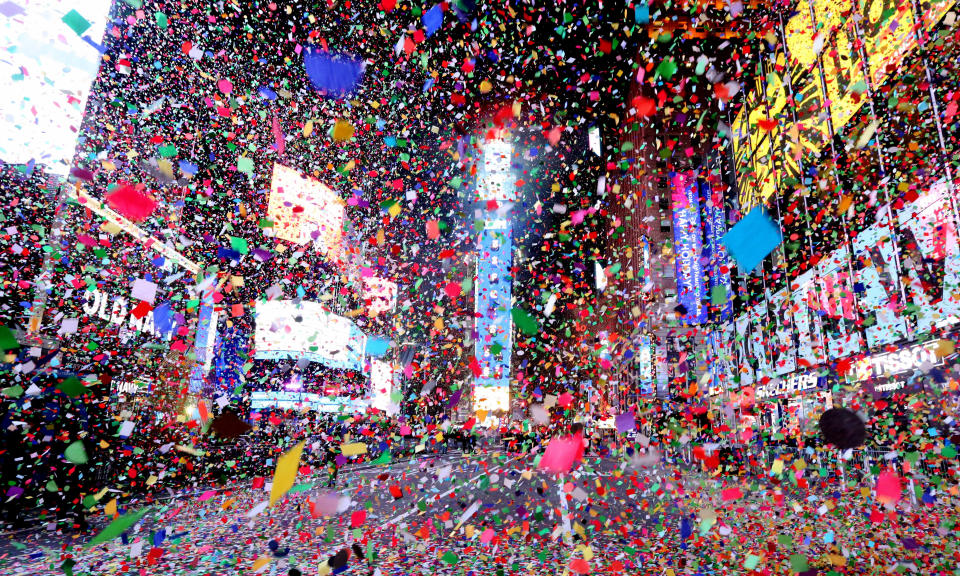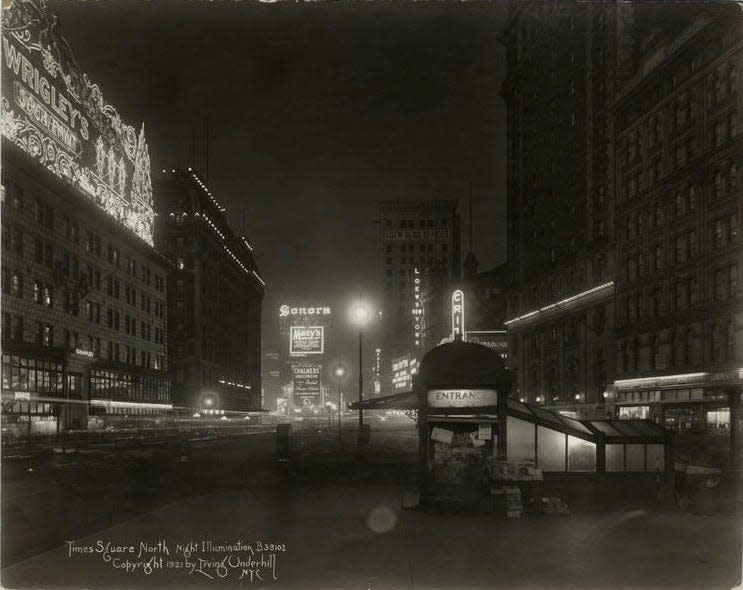Do you know the history of New Year's Eve in Times Square? | Something to Think About
We have made it through the year. One of continued challenges, successes, new solutions and yet, the issues that we have come to know related to COVID-19. But, despite all this, the New Year will arrive and in some fashion or another all of us will celebrate our blessings. And so we should recognize any and all we have as we close out the year.
Family, friends, co-workers, those who have worked tirelessly again this year to serve all of us. We thank you all!
One of the staples of the celebration of the New Year’s arrival is that of the “ball dropping” in New York.
For those of us who are able to keep our eyes open (young revelers aside), will see the arrival of the new year with that countdown to “Welcome 2022!"

Last week's Something to Think About: Do's and don'ts of hunting, hiking in Delaware Water Gap National Recreation Area
Since 1904, the celebration in New York has become an event that welcomes in the new year. A bit of the history of this “ball” to help appreciate its appearance each and every year.
New York in 1904 was a city on the verge of tremendous changes - and, not surprisingly, many of those changes had their genesis in the bustling energy and thronged streets of Times Square. Two innovations that would completely transform the Crossroads of the World debuted in 1904: the opening of the city's first subway line, and the first-ever celebration of New Year's Eve in Times Square.
This inaugural bash commemorated the official opening of the new headquarters of The New York Times. The newspaper's owner, German Jewish immigrant Adolph Ochs, had successfully lobbied the city to rename Longacre Square, the district surrounding his paper's new home, in honor of the famous publication.
The impressive Times Tower, marooned on a tiny triangle of land at the intersection of 7th Avenue, Broadway and 42nd Street.
The building was the focus of an unprecedented New Year's Eve celebration. Ochs spared no expense to ensure a party for the ages. An all-day street festival culminated in a fireworks display set off from the base of the tower, and at midnight the joyful sound of cheering, rattles and noisemakers from the over 200,000 attendees could be heard, it was said, from as far away as Croton-on-Hudson, thirty miles north along the Hudson River.
The night was such a rousing success that Times Square instantly replaced Lower Manhattan's Trinity Church as "the" place in New York City to ring in the New Year.
Before long, this party of parties would capture the imagination of the nation, and the world.
Two years later, the city banned the fireworks display, but Ochs was undaunted. He arranged to have a large, illuminated seven-hundred-pound iron and wood ball lowered from the tower flagpole precisely at midnight to signal the end of 1907 and the beginning of 1908.

In 1914, The New York Times outgrew Times Tower and relocated to 229 West 43rd Street. By then, New Year's Eve in Times Square was already a permanent part of our cultural fabric.
In 1942 and 1943, the glowing Ball was temporarily retired due to the wartime "dimout" of lights in New York City. The crowds who still gathered in Times Square in those years greeted the New Year with a minute of silence followed by chimes ringing out from sound trucks parked at the base of the Times Tower.
The New York Times retained ownership of the Tower until 1961, when it was sold to developer Douglas Leigh. Today, New Year's Eve in Times Square is a bona fide international phenomenon.
Each year, hundreds of thousands of people still gather around the Tower, now known as One Times Square, and wait for hours in the cold of a New York winter for the famous Ball-lowering ceremony.
Thanks to satellite technology, a worldwide audience estimated at over one billion people watch the ceremony each year. The lowering of the Ball has become the world's symbolic welcome to the New Year.
I’ll be happy to watch from the warmth of my living room, but will appreciate the historic nature of this event.
Wishing all a very Happy, Healthy, Prosperous and Blessed New Year!
Debbie Kulick writes a weekly column for the Pocono Record and serves on the frontlines of the COVID-19 pandemic as an EMT.
This article originally appeared on Pocono Record: Debbie Kulick: NYE in Times Square a sight to behold

